
Karin Bruwelheide, a physical anthropologist with the National Museum of Natural History, handles one of the limbs uncovered from the pit. The team has identified the remains as belonging to Union soldiers from the second Battle of Bull Run.

Field surgeons kept records of patients' names and wounds, which have helped narrow down the possible identities of some of the soldiers.

The limbs had been evenly cut (left), and researchers were able to identify bullet holes (right).

Brandon Bies, superintendent of the National Park Service's Manassas site, is also an archaeologist and Civil War expert. During the second Bull Run battle, he says, "Over 100,000 soldiers had trampled, shot, exploded, eaten, burned everything. And so the water was tainted, every single house (and) barn was occupied by wounded soldiers, and these surgeons had very little to work with."
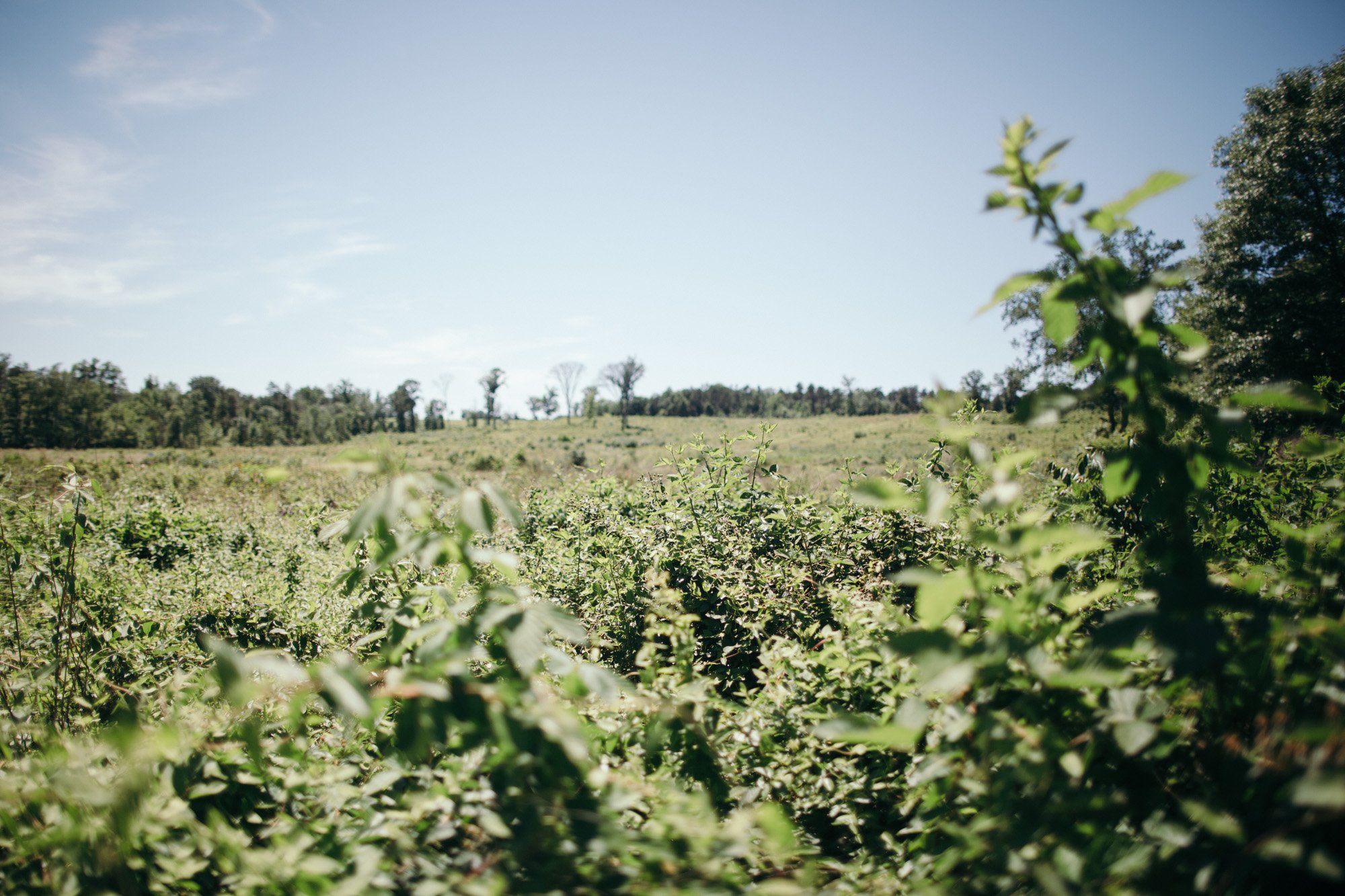
The battle at Deep Cut lasted three days.

The pit also contained buttons from Union uniforms.

An Enfield bullet (left) from the Civil War time period, shows the shape and size of the kind of bullet that killed the soldier.

Scientists at the Smithsonian Institution's National Museum of Natural History have been analyzing the bones to learn more about them and to whom they may have belonged.
A civil war limb pit
A pit of amputated limbs and two nearly complete skeletons that date back to the Civil War were discovered at Manassas National Battlefield Park in Virginia in 2014. Scientists at the Smithsonian Institution's National Museum of Natural History have been analyzing the bones to learn more about them and to whom they may have belonged.
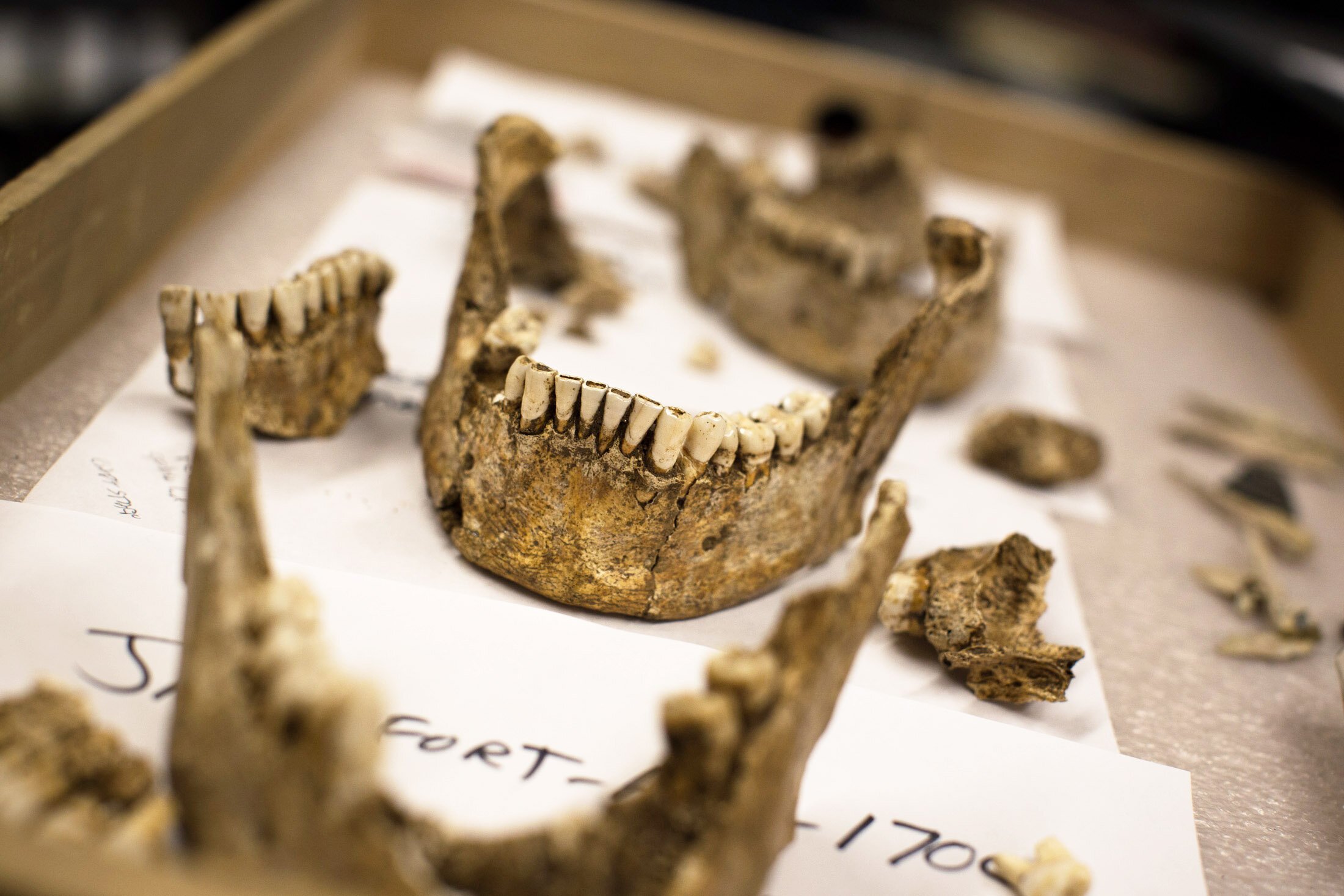
The teeth and mandibles of four male skeletons unearthed in Jamestown, Virginia, now reside in Washington, D.C., at the Smithsonian's museum of natural history.
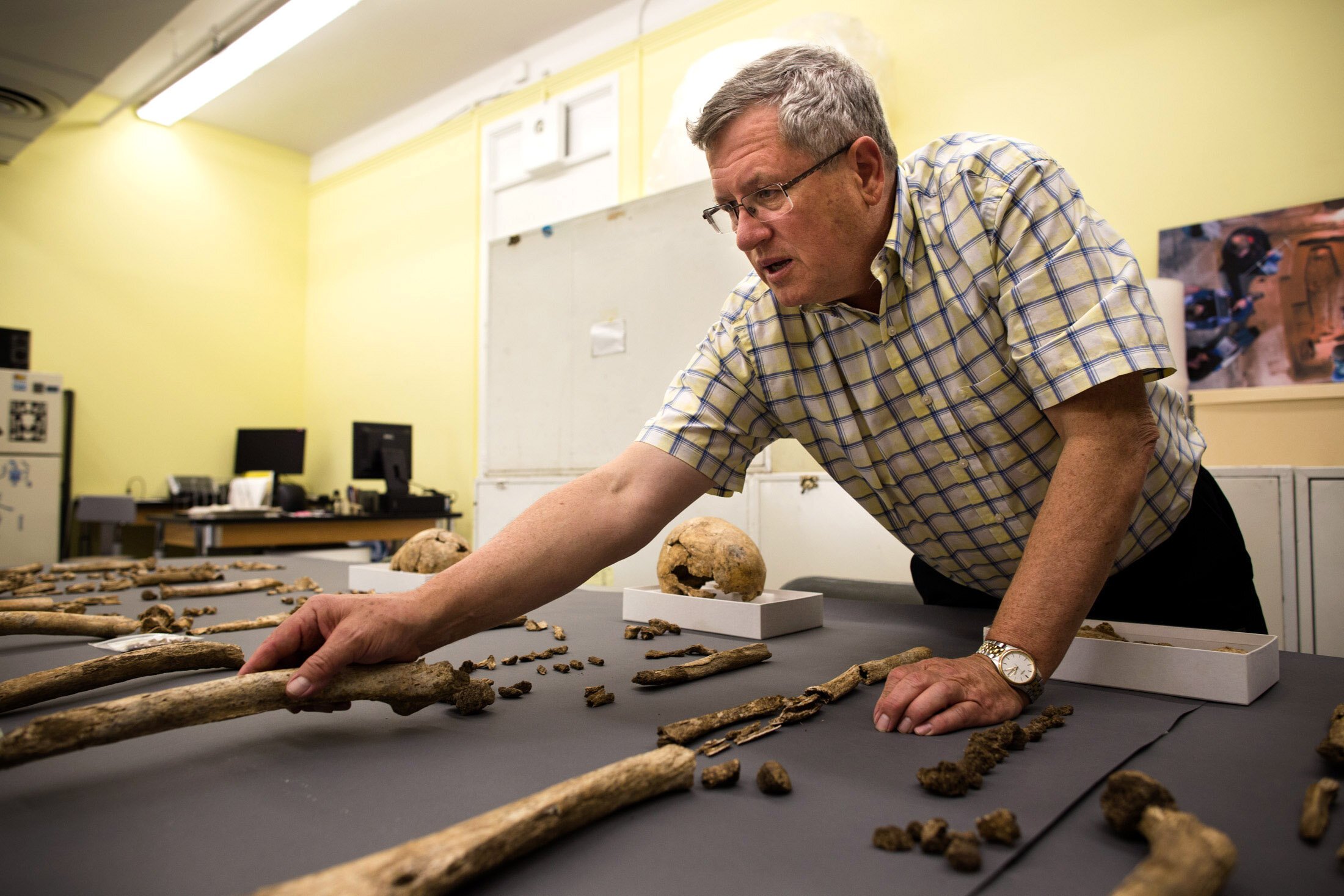
Doug Owsley, a forensic anthropologist at the Smithsonian's National Museum of Natural History, studies every detail of the skeletons.
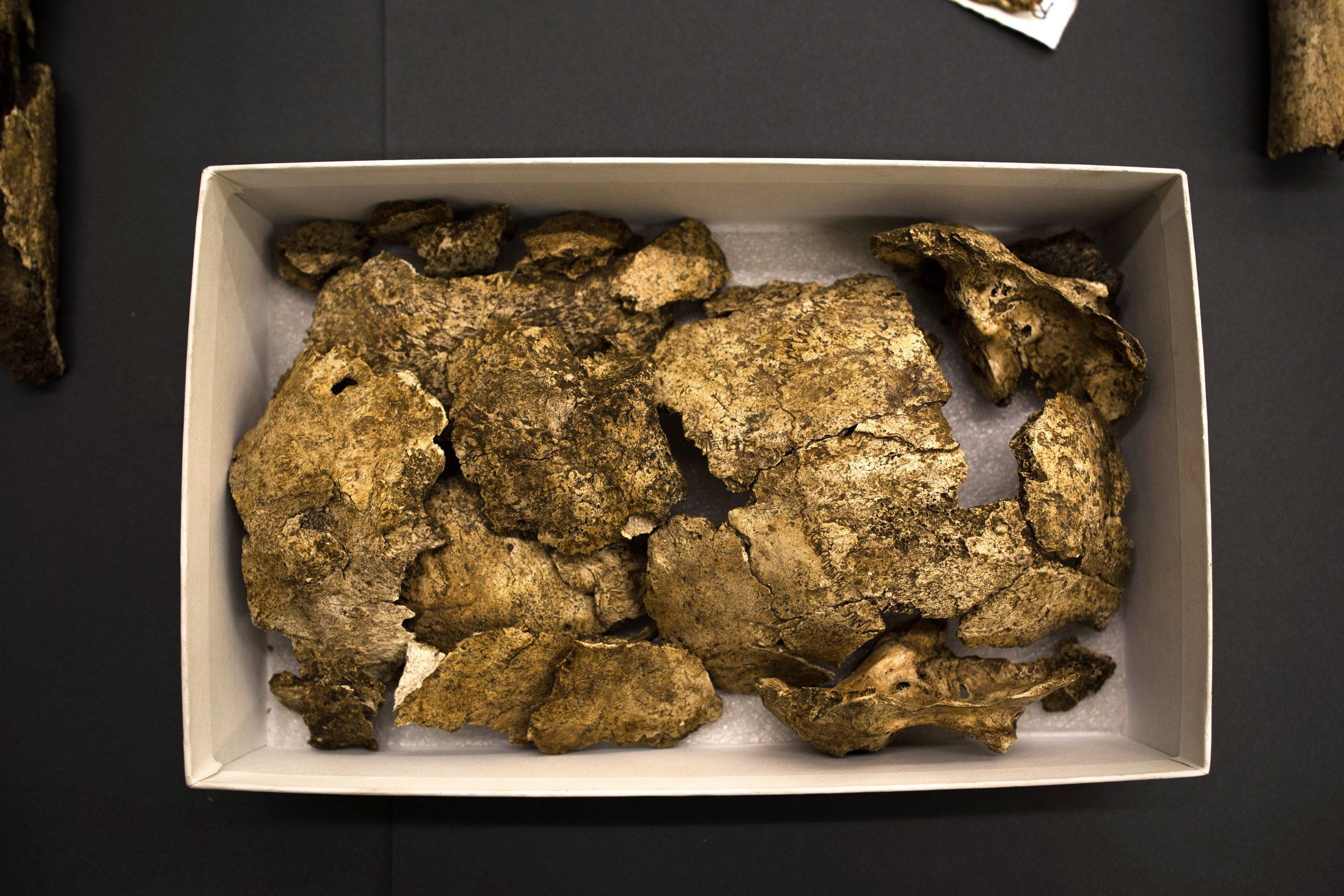
Only about 30 percent of each skeleton was recovered, including these pieces of one man's cranium.
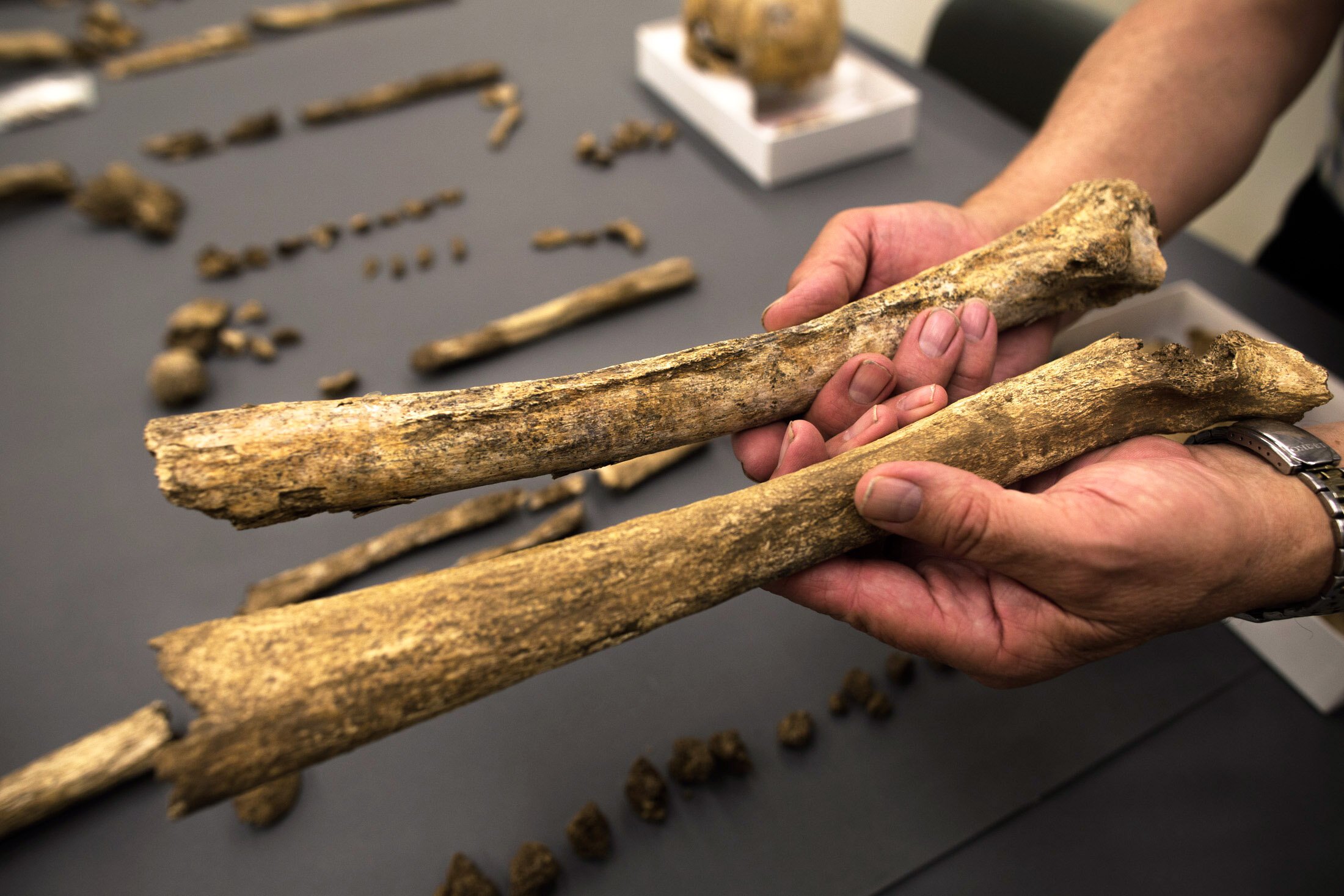
Owsley holds thigh bones from two different skeletons. The one above has a ridge that suggests the man may have had muscular legs — perhaps from riding horses.
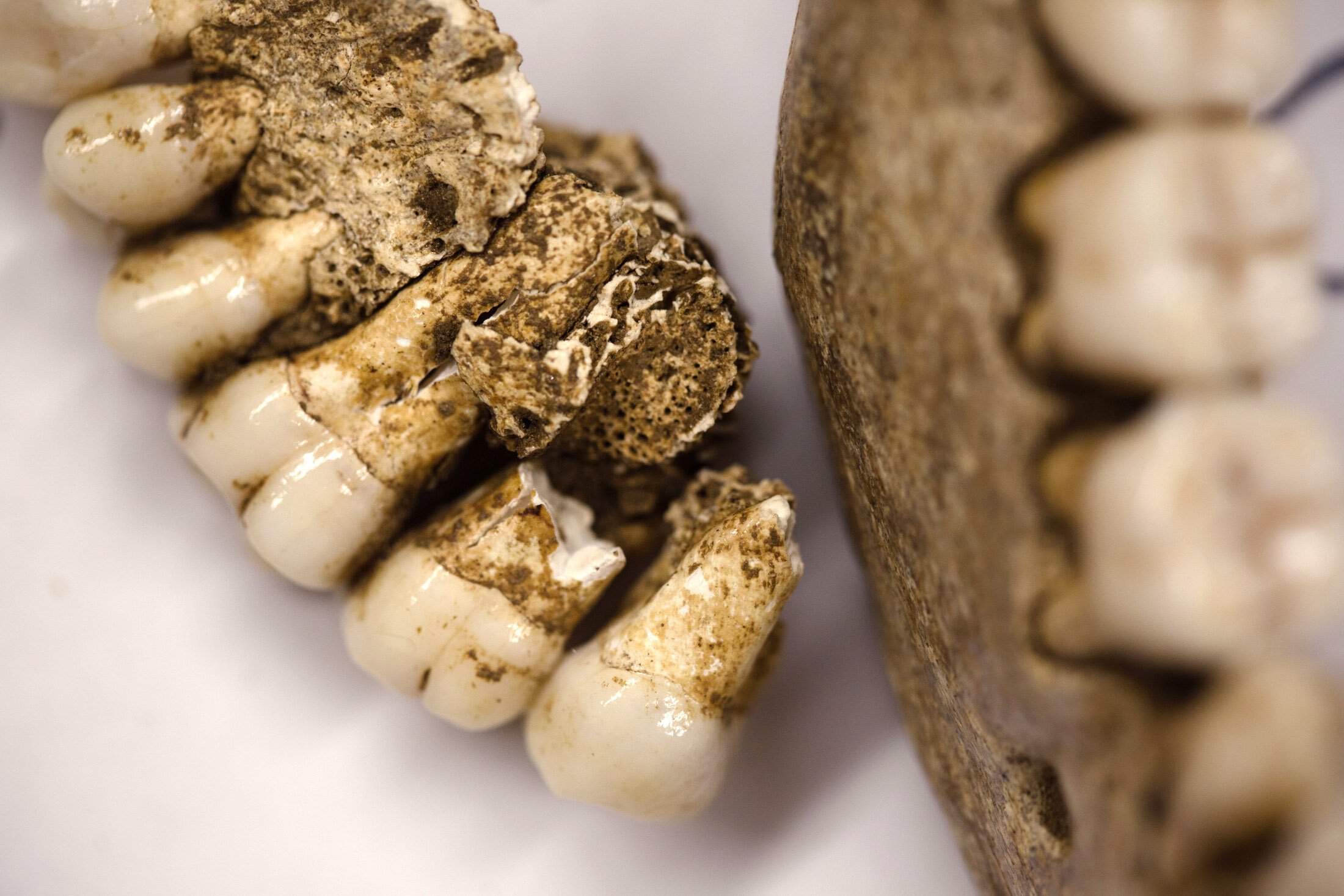
Owsley says the teeth of the skeletons show signs of decay that would have been painful when the men were alive.
Jamestown church skeletons
In another story involving Smithsonian anthropologists, bones and teeth were discovered in the remains of a church in Jamestown, one of the first successful English colony settlements in North America. Researchers believe they've figured out the identities of the men: high-status leaders from the first few years of the Jamestown settlement. Only about 30% of each man’s skeleton was recovered.